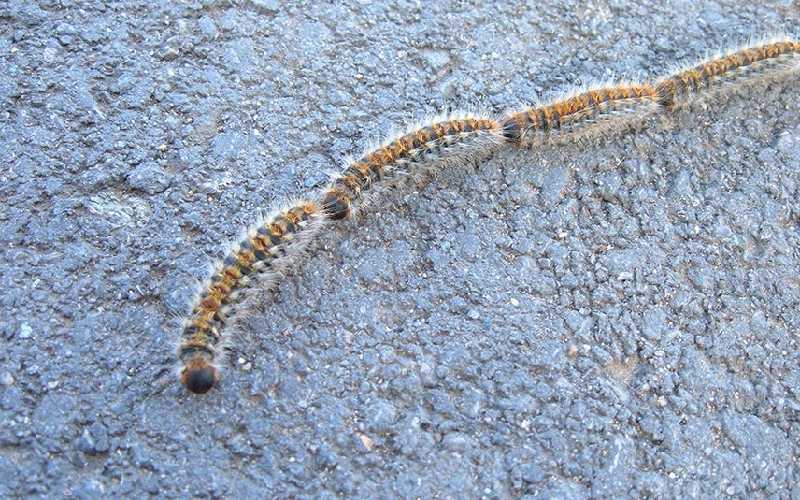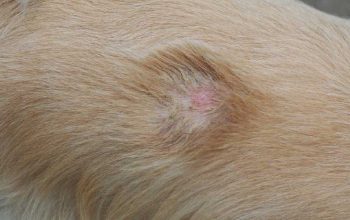ratonerobodeguero.com is a participant in the Amazon Services LLC Associates Program and other affiliate advertising programs designed to provide a means for us to earn fees by linking to Amazon.co.uk and affiliated sites. Affiliate links may be used on this page and in ratonerobodeguero.com articles, but they do not impact on the price that you pay and they do help me to get this information to you for free. Read my privacy policy for more information regarding affiliates.
Processionary Caterpillars are a group of caterpillars in the family ‘Thyrididae’. With about 1,200 described species, this is the largest known group of caterpillars on earth. They are particularly a concern for dog owners in Spain and Portugal because their hairs or spines are poisonous to dogs. Therefore you need to take great care walking your dog in certain areas. Today’s blog introduces these horrid little critters and gives you tips on how you and your dog can avoid them.
What are Processionary Caterpillars?
Processionary Caterpillars are found worldwide and feed on a variety of trees including oak, hazel, pistachio, cherry, plum and apricot. They often feed in groups or clusters and will sometimes form processions where they march up tree trunks together. This is where the name comes from — their habit of walking together in a long line.
The larvae are moderately to very hairy and have sharp spines which they can flick at anything that gets too close. They measure about 2-3cm long or roughly one inch. They usually have three pairs of thoracic legs, but some species have as many as eight pairs. They are called Processionary Caterpillars due to the lines (or processions) that they form when walking in groups. You may see them in very large numbers. They are sometimes called or known as ‘Pine Caterpillars’ as they turn into Pine Moths once they emerge from their crysalis.
Where can Processionary Caterpillars be found?
In the U.S. the most common species is the Carolina Dogwood Borer, which can be found across the eastern seaboard from Maine to Texas. [More information at http://www.insects.cornell.edu/ent/fagr/]
In Europe, we find many species
What do Processionary Caterpillars eat?
Like other caterpillars, Processionary Caterpillars are herbivores, which means that they feed primarily on plant material. The caterpillar’s diet consists mainly of leaves and fruits from a wide variety of trees and shrubs.
The Dangers of Processionary Caterpillars to Humans and Pets
Processionary Caterpillars are herbivores that feed on plant tissue near the base of tree stems or on branches where they climb. Their hairs can cause skin irritation in humans and pets.
Processionary Caterpillars do not carry disease or damage trees as they feed and may be an annoyance to landowners. They are extremely difficult to eradicate from trees and will survive in large numbers if the trees are left uninhibited.
Dogs and Processionary Caterpillars
The hairs or spines of the caterpillars are irritating to humans, but they are poisonous to dogs. Stings from these insects can result in very painful, swollen welts that last for several days and in some cases require medical attention. Dogs that have been attacked by Processionary Caterpillars will have irritated, swollen skin and may vomit or drool excessively.
The main season for Processionary caterpillars in Spain and Portugal is from January to April when the larvae have been laid and start to hatch.
Here is some advice on Processionary caterpilars and avoiding them with your dog:
- Research which type of Processionary Caterpillars are in your area, where they are and when they hatch. Then you can be vigilant at the right time and in the right places.
- If you have land check for these pests before you let your dog off lead.
- Avoid letting your dog off lead in Processionary Caterpillars prone areas.
- If your dog likes to ‘eat’ strange things such as insects, it might be a good idea to muzzle your dog in Processionary Caterpillars areas and season.
- If you suspect that you dog has been in contact with Processionary Caterpillars seek a Vets advice immediately.
If you enjoyed this article you might also like to read about Ringworm in Dogs



One thought on “Processionary Caterpillars and Dogs”